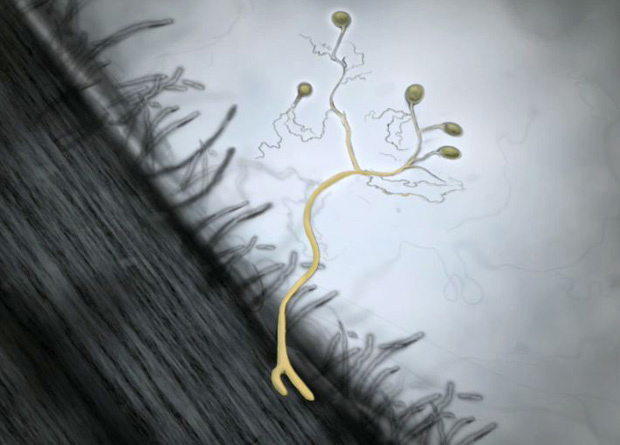Friendly fungi
Even with its absorbing hairs, it would be hard for the tree to meet all its needs. That's where friendly fungi, or mycorrhizae (Symbiotic association between the mycelium of a fungus and plant roots.), come into play. They may be microscopically small, but they cover several square metres of soil. Here you can see the mycorrhizal fungus Wilcoxina mikolae covering almost all the absorbent hairs on this red pine.
The mycorrhizae work in symbiosis (Intimate association between two organisms.) with the tree, supplying it with large amounts of water and nutrients. In exchange, the colonized tree provides them with sugars that it produces by photosynthesis (Synthesis of organic substances made by plants from the light energy.). To meet the needs of these sub-contractors, the tree must increase its rate of photosynthesis and fix 40% more carbon. The mycorrhizae must be terribly efficient to warrant all this extra effort. If you're a food lover, you probably know another type of mycorrhizal fungi: truffles.

© 1. National Research Council Of Canada, NRC Research Press (Visual Aid only) / 2. Julie Marleau




